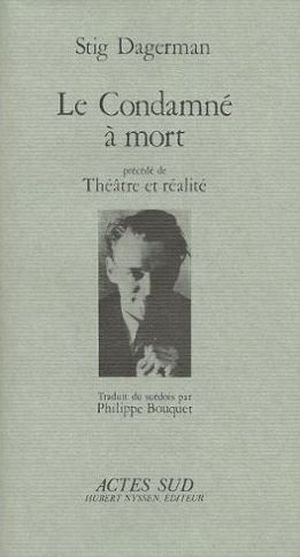
Pièces en 4 actes se déroulant dans différents décors : prison, pièce genre cabinet de restaurant et chambre. Elle conte l'histoire d'un condamné à mort gracié qui commet un nouveau crime afin de ne pas échapper à son sentiment de culpabilité et à une innocence impossible. Elle a été jouée la première fois en 1947 au Théâtre Dramaten (Lilla scenen) de Stockholm dans une mise en scène de Alf Sjöberg "Curieuse pièce dans laquelle Stig Dagerman tente (avec assez peu de bonheur) d'appliquer des idées sur le théâtre "dédramatisé" qui feront ensuite la gloire de Beckett et Ionesco.
Author

Stig Dagerman was one of the most prominent Swedish authors during the 1940s. In the course of five years, 1945-49, he enjoyed phenomenal success with four novels, a collection of short stories, a book about postwar Germany, five plays, hundreds of poems and satirical verses, several essays of note and a large amount of journalism. Then, with apparent suddenness, he fell silent. In the fall of 1954, Sweden was stunned to learn that Stig Dagerman, the epitome of his generation of writers, had been found dead in his car: he had closed the doors of the garage and run the engine. Dagerman's works deal with universal problems of morality and conscience, of sexuality and social philosophy, of love, compassion and justice. He plunges into the painful realities of human existence, dissecting feelings of fear, guilt and loneliness. Despite the somber content, he also displays a wry sense of humor that occasionally turns his writing into burlesque or satire.